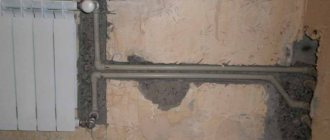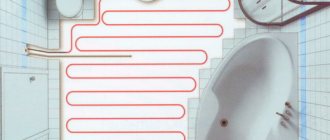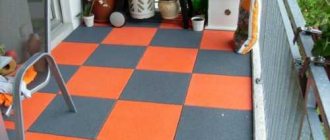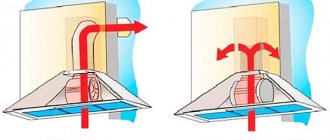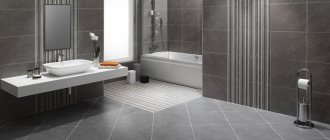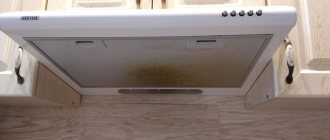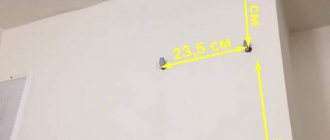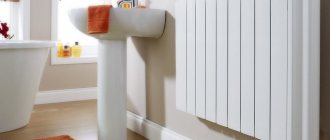Bathroom fans
Bathroom fans
- are now badly needed in every home. Due to the widespread installation of plastic windows, there is a need for forced ventilation, especially in the bathroom! High humidity is always present there, this not only brings discomfort, but can also cause mold and mildew on the walls.
How to choose a bathroom fan
Before buying a fan for a bathroom, you need to clarify the initial data of the room where the installation will be carried out:
- Installation location - in the wall or on the ceiling
- Duct connection or ventilation shaft installation
- Allowable hole diameter
Next, you need to pay attention to the characteristics of the fan. The most important of them are:
- Performance
- Electrical connection reliability
- Engine quality and build
- Material safety
- Noise level
Forced ventilation
Supply and exhaust forced ventilation system includes a heat exchanger, filters and fans. The fresh air coming from the street is heated if necessary and distributed among the rooms. And the polluted one is forcibly sucked out. This type of ventilation is characterized by high efficiency and productivity.

Forced ventilation
To organize the hood in the toilet and bathroom, fans with bearings or bushings are used. The second option is preferable, since such a device is quieter and has a more affordable price. It is common to connect a fan to a light switch. Then the hood will start functioning as soon as the light comes on. Or they mount a separate switch for ventilation, placing it on the wall or on the device case.
Important! Equipping the entrance street duct of the ventilation system with filters, it is necessary to constantly care for them. They need to be changed regularly, as a dirty filter will not allow enough fresh air to enter the room. And the substances accumulated in it can become a source of reproduction of bacteria and harmful organisms.
Modern technologies make it possible to equip forced ventilation with air humidity sensors. In this case, the mechanism will work as soon as the moisture content reaches the specified parameter. But besides convenience, this option also has a drawback. For example, the cooker hood may be triggered while the baby is bathing, creating an unnecessary draft. There are also ventilation systems with a motion sensor. They are triggered when someone enters the room. The principle of operation is the same as when connected to a light switch, but the cost of the sensor is much higher.
Advice. Additionally, the ventilation system of the bathroom and toilet can be equipped with timers. Those. it becomes possible to delay the shutdown after leaving the bathroom.
Overhead fans
Overhead bathroom fans
- one of the most common types of fans for domestic use. During installation, this fan is superimposed on a wall or ceiling, and the inner part, a branch pipe, goes into the ventilation duct. It is this method of installation that became fundamental in the name of the type of this equipment.
The main function of overhead fans is to remove exhaust and humid air from the room. They are often installed in bathrooms, toilets, kitchens, laundries and other small and poorly ventilated areas.Good ventilation in rooms is important not only to remove the discomfort from excess moisture in the air, but also to prevent the appearance of mold and mildew, which are harmful to human health. Overhead fans provide you with comfortable, fresh air!
Overhead fans can be divided into:
The latter are quite rare, they are more expensive, but at the same time they have much higher performance. High performance of centrifugal overhead fans is achieved by using a special centrifugal impeller with forward curved blades.
Price overhead fan
The price of overhead fans depends on many factors:
- Performance
- Nozzle diameter
- Check valve
- Additional functions: timer, humidity sensor, motion sensor, CO2 sensor, pull-cord switch, etc.
- Color and design
- Low noise
- Eco-friendly plastic
- Electrical connection safety
- Motor type: on sleeve bushings or ball bearings
- Country of Origin
- Control system
Thus, the choice of overhead fans seems to be quite large. In order not to get bogged down in a painful choice, it is recommended to determine the parameters that are important for you in advance. Remember that performance, quietness, reliability of the motor, electrical connection and environmental friendliness of materials are the main characteristics for a long and safe service of the clip-on fan.
If you need help or just want to find out the cost of an overhead fan, do not hesitate to contact the specialists of the Blagovest company, we are always happy to advise you!
How to choose the best model?
When choosing a toilet fan, several groups of parameters are taken into account. First of all, this is the design - the shape of the case, the diameter and type of the fan itself. Further, the performance indicators are determined, including the throughput and characteristics of the power supply system. When deciding which fan for the hood in the toilet is better, you cannot do without ergonomic nuances. Today, the optimal solution from the point of view of convenience is a fan, which will be combined with the general climate infrastructure. The most advanced devices assume automated control from a central controller. And here it is worth dwelling in more detail on the functions that may be included in such an infrastructure.
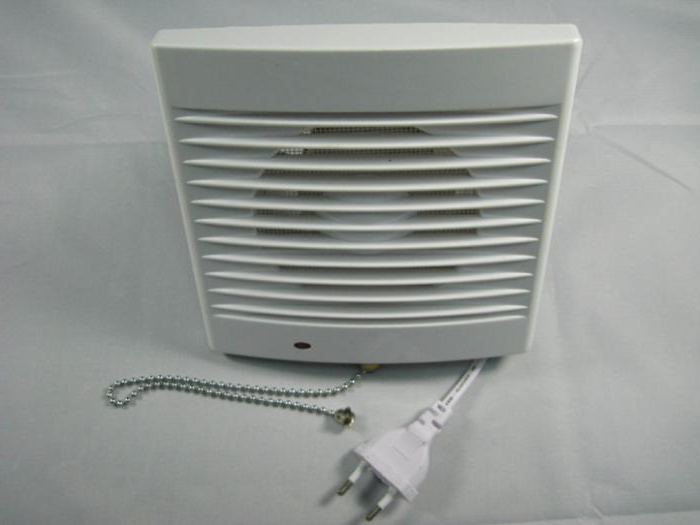

Domestic exhaust duct fan with non-return valve
For a number of reasons, natural ventilation in rooms may not be able to remove unpleasant odors or moisture. This is due to redevelopment in the apartment or blockage of the exhaust shafts. Experts recommend that residents of such houses install an exhaust fan with a check valve. A wide range of such products is offered in retail chains, and sometimes it becomes difficult to choose the optimal device.
In ancient Egypt, people noticed the negative effect of stuffiness in the premises on the human body. The situation was aggravated if the kitchen was in the same building. Carbon monoxide filled the entire space, even causing suffocation. Chimneys were used to remove polluted air. For them to work correctly, it was necessary to organize a draft, but this did not always work out. Therefore, the creation of forced ventilation has become relevant.
In the 18th century, devices appeared that were the prototype of the modern fan. A plate bent in the horizontal plane was used as a supercharger, and its movement was due to a steam engine. Kerosene or alcohol was used as fuel.
The discovery of electricity and the creation of a power generator in 1831 allowed Robert Davidson to invent the modern engine. At the same time, Russian engineer Alexander Sablukov came up with a centrifugal fan. Its design consisted of a cylindrical casing with a wheel placed in it, which has four straight blades. The rotation of the wheel at that time was carried out manually. This invention began to be used to ventilate the cabins of ships and mines. In 1892, the French scientist P. Mortier proposed a version of the cross-flow fan. It used a drum-type wheel with curved blades.
The blades of the exhaust device received a modern look after the research of Nikolai Yegorovich Zhukovsky, who studies aerodynamics and created the vortex theory of the wing. The creation of the first electric fan is credited to Thomas Edison. But it is known for certain that drawings of a device resembling a fan are found in the records of Leonardo Da Vinci.
The most demanded rooms in which exhaust devices are installed are sanitary rooms, kitchens and bathrooms. This is due to the poor natural removal of unpleasant odors and moisture from them. The hood in apartment buildings is usually built taking into account the supply air coming from the windows of the apartment. But due to the replacement of old frames with metal-plastic ones, its supply stops, so you have to keep the windows in a state of ventilation, which is not always convenient.
There is another reason, which is that forced powerful hoods can be installed in neighboring apartments. Their strength can be so great that the removed air begins to be blown out of the ventilation ducts into the middle of the rooms located above or below the riser.
Bathrooms and sanitary rooms are initially located in remote parts of the apartment from the windows. Therefore, the flow of fresh air there is even more difficult. After taking water procedures, the humidity rises, and it must be removed. If this is not done, mold and mildew will form, adversely affecting the health of living people. In addition, furniture and other items become unusable.
Also, if any kind of work was carried out in the house, the hood could be damaged, as a result, unpleasant odors begin to drag on from unscrupulous neighbors. Therefore, the hood with a non-return valve to the bathroom, a toilet or kitchen is installed in the following cases:
- an unpleasant odor in the room, emerging from the apartment shaft;
- weak natural draft, which leads to the formation of stagnant air;
- clogged mine of a residential complex;
- mold and mildew formation;
- lack of the ability to organize a constant supply of fresh air.
How to choose the right option
The hood with a check valve in the bathroom is popular. But in order to make the right choice, you need to familiarize yourself with certain parameters:
- The device must comply with safety standards and must be accompanied by certificates and warranty certificates.
- If it is an electric hood, then it must be placed in a protective case so that drops or steam do not fall on the device.
- It is worth buying products that allow you to remove dirty air in full. It is better to give preference to devices with a maximum capacity of 100m3 per hour.
- Additional devices must be present in the form of timer humidity sensors, hoods with a check valve.
- It is better to choose reliable devices from manufacturers that have proven themselves well.
When choosing a power, one should take into account the size of the room, as well as the fact whether it is connected to a toilet or not. If you buy a device with humidity sensors, then it will automatically adjust and work without human intervention.
Thanks to devices with a non-return valve, exhaust air will not re-enter the room.Such models also prevent the ingress of foreign odors and dust. They are designed so that after the fan stops working, the valve slams. There are devices with controlled valves that slam under the action of a spring and those that are closed by a stream of air.
If the dimensions of the bathroom are impressive, then it is better to place two hoods in it at once, since one, even the most powerful model, may not cope with a large area.
Good ventilation in the bathroom will protect the room from mold.
The bathroom, as a room with a high level of humidity, has special requirements for ventilation. In simple words, it must be ventilated sufficiently intensively to create and maintain a healthy environment, due to the fact that when taking a bath or shower, a large amount of steam is generated in the bathroom, which can damage the finish or worsen the microclimate. There is a silent bathroom fan with a non-return valve, which almost completely meets these conditions.


Why do you need a bathroom fan?
Installation of this particular device with a check valve is the most rational solution. Special requirements for ventilation in rooms with high humidity levels are as follows:
- ventilation should ensure air circulation in the room;
- normalization of humidity in the room.
Fact! 25 m³ / hour for a separate bathroom and 50 m³ / hour for a combined one. This should be the intensity of air flows for the normal functioning of natural or artificial ventilation in the bathroom and toilet.
A high level of humidity in the bathroom creates favorable conditions for the appearance and growth of fungi and mold, which can cause furniture to deteriorate, floor, walls, ceiling and their coverings to collapse. Even moisture-resistant equipment is recommended to be used in drier rooms in order to extend its service life.
Musty air can negatively affect health. In addition, the humid environment of the bathroom can contribute to the fact that insects can start in it. And, in the end, the unpleasant smell from the ventilation ducts is quite unpleasant. All this reduces the level of comfort when using these premises.
Good air circulation helps to normalize indoor humidity levels and prevent steam from entering living rooms through cracks in doors. Installation of a silent fan with a non-return valve will allow all this to be done.


Features of the hood in the bathroom


Extractor hood for bathroom
There are different types and principles of operation of such systems:
- Natural. Its work is based on the influence of natural factors in the form of the difference in pressure and temperature in the room and behind it. Exhaust air comes out through a ventilation hole in the wall of the house. To ensure its flow, you need to open a window or door. But in multi-storey buildings, especially if the building is old, the ventilation ducts are often clogged or clogged. Therefore, natural extraction will not work.
- Mechanical extraction. The functioning of such a system is ensured by the operation of the fans. They carry out the forced removal of contaminated air flows into the outlet ventilation ducts. Such structures can be installed at any time, while natural ventilation is laid during construction work.
A hood for the bathroom may be needed:
- If natural air exchange is absent or weakly functioning.
- When redeveloping a room or if it is combined with a toilet. In this case, some of the branch channels are removed.
- If electrical equipment has been installed, due to which the formation of steam increases, and it is not discharged through natural ventilation.
- In a small bathroom, as a conventional hood will not have time to remove steam.
In such situations, it may be necessary to install additional systems to ventilate the room.
Why is it better to equip artificial ventilation?
There are two main types of indoor ventilation:
- Natural supply and exhaust.
- Artificial, with forced air exchange.
Natural supply and exhaust ventilation is one of the standard solutions to the problem of air circulation in most of today's apartment and private houses. The system works with a combination of air inlets and exhaust air vents. The role of inlet openings is played by window vents, ventilation recesses in the lower part of the doors, and gaps between the door and the floor.
The quality of natural supply and exhaust ventilation directly depends on the draft in the exhaust ducts, which is obtained due to the difference in pressure between the outside and inside. Exhaust openings are made in the form of vents in the ceiling or in the upper part of the walls near the ceiling itself. The supply openings cannot provide sufficient supply flow rates. Because of this, natural exhaust ventilation does not satisfy the conditions for the formation of the correct microclimate in the bathroom.


To ventilate the bathroom or toilet, you need to install artificial ventilation with forced air exchange.
There are two types of artificial ventilation:
- Natural inflow and forced air extraction is a supply complex.
- Artificial air supply and its natural exit from the room.
To ensure forced air exchange, it is necessary to equip a network of air ducts through which the processed air masses will be removed from the room. In order to achieve the necessary conditions for creating a comfortable microclimate for the intensity of air flows, this ventilation system is equipped with fans. A bathroom hood with a non-return valve is much more efficient.
Features of Toilet Exhaust Fans
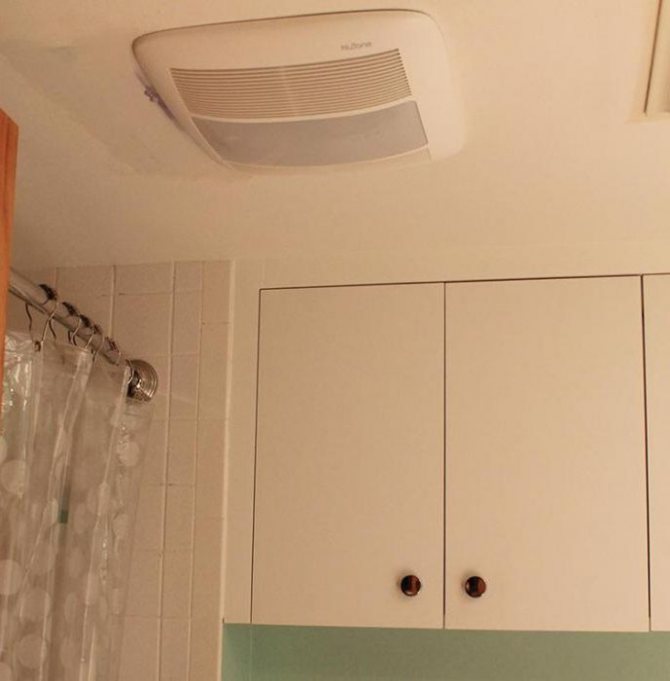

Firstly, such devices are compact in size. For aesthetic reasons, as well as for technical and design standards, the channel and its communications in the bathroom should be compact. Most often, the device is discreetly located in the upper part of one of the walls that go either into the central ventilation shaft, or directly onto the street. Secondly, both the outer coverings of the case, which houses the hood for the toilet with a fan, and its features from the point of view of structural performance are oriented towards protection from external influences. If we are talking about a toilet combined with a shower and a bath, then protection can be expressed in an enhanced water-repellent function in the first place. Manufacturers produce special modifications in which special insulators protect the electrical filling of the fan and communications from splashes, through which its power supply is carried out.
Device and principle of operation
An exhaust fan in the bathroom, equipped with a check valve, looks like a fairly simple device that prevents air from flowing back from the ventilation duct. The check valve is usually made of plastic or stainless steel. They consist of three main parts - a frame of two shutters and a pin on which the shutters are attached.
In addition to the check valve, the silent fan consists of the following parts: Air intake grille, aerodynamic impeller, vibration damping inserts and a motor.


The principle of the check valve, regardless of where it is installed - in a sewer pipe or a ventilation shaft - is in no way different. It is made in such a way that the movement of water or air (depending on the installation location) is only in one direction. When you try to go back, air or water will be blocked by tightly closed flaps.
The sash is driven directly by air, which is naturally done at the moment the fan is turned on. The air is drawn out until the fan turns off. As soon as this happens, the flaps slam shut and block the return path of air.
And now let's briefly tell you about some of the features of the silent fan device:
- The engine is designed with special vibration damping elements that absorb vibration, which is the main source of noise.
- Manufacturers are very careful with the appearance of the fan. The intake grille is streamlined. In addition, the material itself, from which the grille is made, plays an important role - the air resistance depends on it.
- Quiet operation is also based on a different bearing model. In addition to noise absorption, they have a high degree of reliability and do not require additional maintenance (in particular, lubrication).


What to consider in the functionality?
The concept of "smart" home assumes that even a modest fan in a toilet or bathroom should be provided with a wide range of monitoring sensors. In particular, the basic set includes presence sensors and humidity controllers. Based on the readings of the sensitive elements, the operating mode of the device is selected. For example, a fan with a flap for the hood to the toilet will, depending on the state of the air environment, regulate both the speed of rotation of the blades and the throughput of the valve. Less technological and at the same time more affordable devices do without complex automation and operate according to timer settings. This is the most popular solution among ordinary city apartment owners.
How to choose a bathroom fan?
Nowadays, there are a lot of models for air ventilation on the market, both from domestic and foreign manufacturers. What are the first things to look for when buying an exhaust fan? These characteristics are: productivity, efficiency and comfort in use.
- Performance. To determine the required fan performance for a bathroom, you need to know the volume of the room and the rate of air exchange. It is determined by sanitary standards and depends on the type and purpose of the premises. For bathrooms, this value is 6-8. To calculate the performance of the exhaust fan, you need to multiply the volume of the room by the air exchange rate.
- Profitability. Together with the conventional models, which consist of blades and a switch, but removed together, you can find models equipped with additional functions that can reduce energy consumption. The most common are the presence of motion and humidity sensors, there are also models equipped with a timer.
- Moisture sensor. The switching on and off of a fan equipped with this sensor depends on the humidity level of the room. The fan starts working when the humidity level reaches a certain point, and stops it when it drops to the set value. Such models are most preferable if there is a goal to save energy consumption.
- Motion Sensor. These models help to save electricity, as they react to movement in the room. That is, they start up only at the moment when there is someone in the bathroom or toilet, and turn off when there is no one there. The disadvantages of such models include the possibility of an involuntary shutdown, due to the fact that there is not enough traffic in the bathroom "according to" the sensor.
- Timer. The most rational solution to the problem of energy saving and room ventilation is a fan with a timer.This fan automatically starts to work at a specified time, and turns off after a specified period of time. The working time depends on the bathroom and the intensity of its use.
- Comfort during operation. Depends on the level of noise generated during operation. There are no completely silent fans. But the sound created by modern models does not create discomfort. Since it does not exceed 35 decibels.
- Performance. The most famous manufacturers are: Vents, Maico, Soler & Palau, Helios. They produce models that are of high quality and long-term durability, and besides, they have a low level of noise during operation and a high level of moisture resistance.
Fan control system
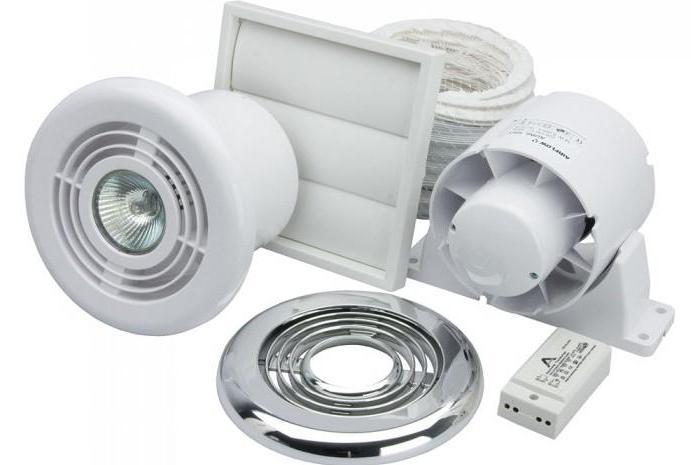

Ergonomics, efficiency and energy consumption will largely depend on the way the ventilation unit is controlled. Initially, all models can be divided into two types - with manual and automatic, that is, electronic, control. The first option is used less and less, since it requires the user to independently close and open the same valves. Electric models or a battery-powered ventilated toilet hood eliminate the need to manually control the device. Moreover, the latest modifications with intelligent control react on their own to changes in the air and temperature environment, making appropriate decisions about setting the fan operating mode. The concept of combining a fan with a lighting function in the toilet is also popular. The device will be triggered automatically every time the user turns on the light. That is, the purification of local air will be logically carried out at the moments of its pollution.
How to install a bathroom fan with a non-return valve?
There are two types of bathroom fans: axial and ducted.
- An axial fan is a small propeller with blades whose task is to draw in moist air while rotating and thus remove it into the mine. These devices are suitable for small bathrooms (up to 15 m3), which are not connected by one shaft to other rooms. They allow for good ventilation, and at the same time are quite cheap. The only drawback is that they are noisier compared to duct fans.
- Duct exhaust fan - is a more advanced mechanism, which is a turbine with a volute placed in a plastic casing. This fan actively sucks in air, ventilating the room well and with high quality, is intended for bathrooms with a volume of more than 15 m3, combined bathrooms or with clogged natural ventilation ducts. Duct fans with a check valve for the bathroom have high reliability, performance and low noise level during operation. The only drawback of this dress is the rather high price.
In industrial premises, the third type of fans with a non-return valve is usually installed - radial. These are large models with a spiral grille.
The installation of a fan with a non-return valve is best carried out in the air duct of the bathroom exhaust or at the entrance to the exhaust air lock. These holes are usually found in the wall or ceiling in the corner opposite the front door. The overhead fan model with an axial mechanism must be fixed directly in front of the ventilation opening.


In the event that a duct ventilation device is used, it must be inserted into the hole and covered with a decorative grill. It is worth noting that the duct fan has a low noise level during operation due to the fact that its motor is located in the ventilation hole.
- Power to the device must be fed from the box to which the lighting system is connected.
- The wires that go to the fan must be hidden in the grooves or under the suspended ceiling.
- Use a pre-made hole in the wall to install the device Insert the plastic ventilation duct flush with the wall and reinforce it with plaster, then connect the power supply and install the hood.
- The ventilation pipe can be replaced with a 100 mm PVC drainage pipe.
- You need to remove the top cover from the device and lubricate its back with liquid nails, then install the fan, pressing its back to the wall.
- Be sure to install the ventilation grill by screwing it in with screws or placing it on the latches. Tip: The grate must be regularly cleaned of dust.
In order to power the installed device from the mains, they throw a cable from the nearest box. At this time, you need to remember about the need to comply with the rules of electrification for rooms with high levels of humidity by placing the cable in a special protective channel and hiding it behind a suspended ceiling, wall panels or plaster.
The Silent Exhaust Fan is a simple yet effective device that helps to reduce the level of humidity and increase the rate of air exchange, thereby creating a more comfortable environment in the bathroom. Modern models of this device are easy to install, have a high level of reliability during operation and are equipped with automatic start and stop systems, and the combination of practicality and aesthetic appearance will allow them to fit into any bathroom interior.

